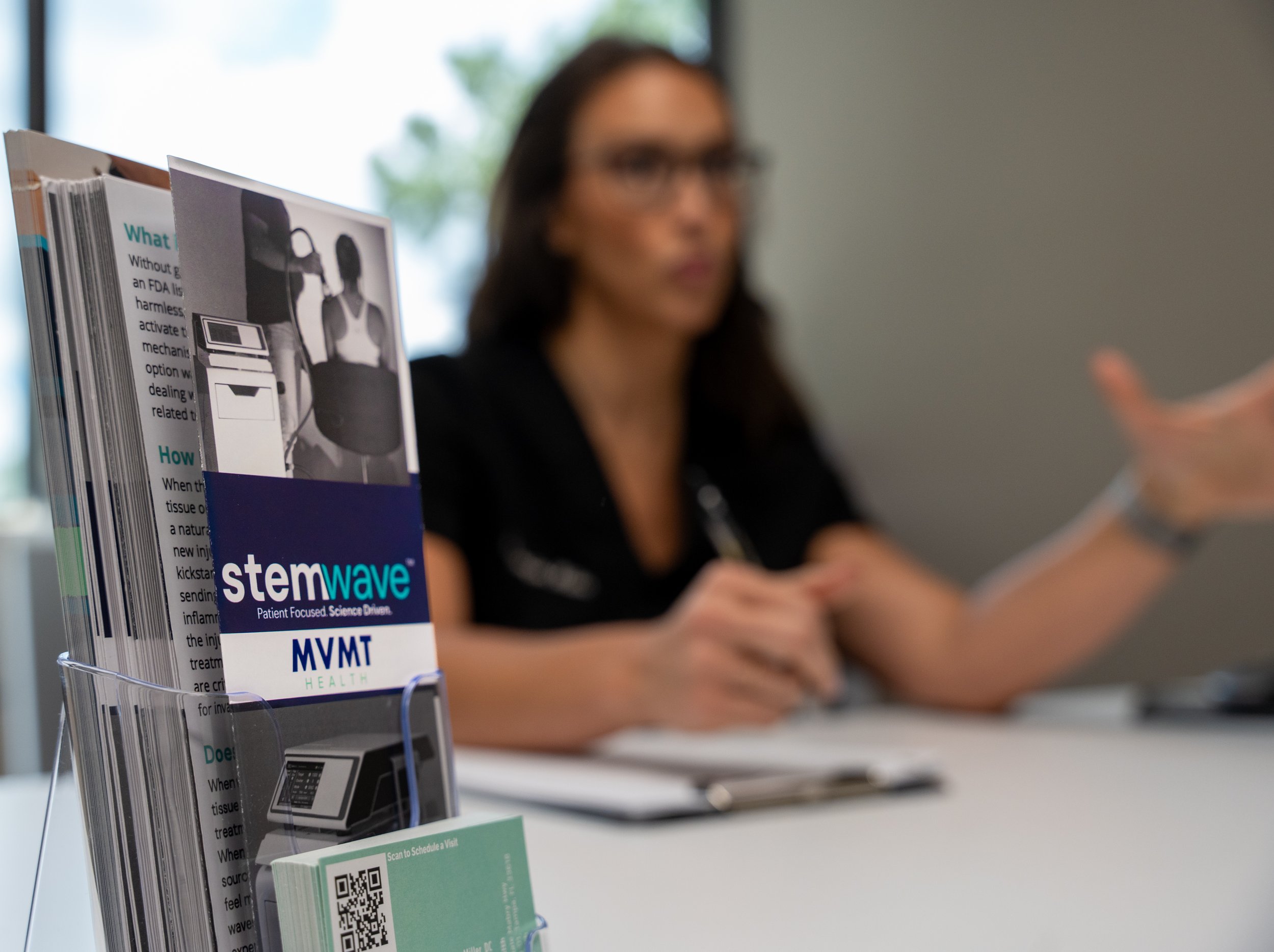
It’s time to overcome knee pain.
Discover how MVMT Health is helping people overcome chronic knee pain.
The knees are a complex network of bones, tissues, and ligaments, and consequently, there are several factors that can result in knee pain.
You might be dealing with osteoarthritis, a common condition resulting from knee joint wear and tear.
Maybe an old sports injury is haunting you, or perhaps it's a case of tendinitis, an inflammation or irritation of the tendon.
Regardless of the cause, one thing is for sure: knee pain is debilitating, and it's time for you to find relief.
Let's dive into the top three causes of knee pain, their diagnosis, and associated pain patterns.
1. Osteoarthritis
Osteoarthritis is the most common form of arthritis and a leading cause of knee pain. It occurs when the protective cartilage at the ends of your bones wears down over time, causing bones to rub against each other.
Diagnosis: Medical professionals generally diagnose osteoarthritis using a combination of physical examination, patient history, and imaging tests like X-rays.
Pain Pattern: The pain usually develops gradually over many years and is felt all around the knee. It is often worse in the morning or after periods of inactivity.
2. Meniscus Tears
The meniscus is a piece of cartilage that provides a cushion between your femur (thigh bone) and tibia (shin bone). A tear in the meniscus can cause knee pain.
Diagnosis: A meniscus tear is typically diagnosed using physical examination and confirmed with imaging tests such as MRI.
Pain Pattern: Pain is often sharp and located on the inside or outside of the knee joint. It may get worse with squatting or twisting movements.
3. Patellar Tendinitis
Patellar tendinitis, also known as "jumper's knee," is an injury to the tendon connecting your kneecap (patella) to your shinbone. It's common in athletes who frequently jump, hence the nickname.
Diagnosis: Diagnosis usually involves a physical examination, patient history, and sometimes an ultrasound or MRI.
Pain Pattern: This pain typically presents as aching and stiffness in the front of the knee, increasing with jumping, running, or walking downhill or downstairs.
Understanding these common culprits of knee pain can guide you in seeking the appropriate treatment. Remember, early detection and intervention are key to maintaining your knee health!

Let's talk about shockwave therapy. This state-of-the-art treatment uses energy from acoustic waves to initiate a process called neovascularization in certain parts of the body. In simple terms, it stimulates healing by increasing blood flow, and guess what? It's highly effective for treating chronic knee pain.
Shockwave therapy is non-invasive, safe, and requires minimal downtime. But the best part? It offers an excellent success rate. It targets the root cause of knee pain, promoting healing and relieving pain, allowing you to get back to doing the things you love.
So, if you're tired of living with knee pain and want to explore if shockwave therapy is right for you, we're here to help.
Let's Take the First Step Together
At MVMT Health, we're passionate about helping people overcome chronic pain and enjoy a better quality of life. Don't let knee pain dictate your life any longer. We invite you to schedule a discovery visit with our team. Let's figure out the best way forward together because you deserve a life free from pain.
Contact MVMT Health today, and let's say goodbye to knee pain once and for all!


